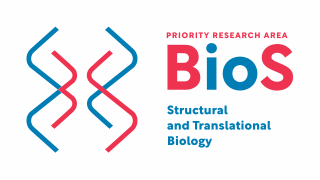Our Laboratory offers a possibility to perform an untargeted metabolomics using Orbitrap Exploris 120 mass spectrometer*. We have a capability to use the reversed phase (RP) and hydrophilic interaction chromatography (HILIC) methods.
Quantitative LC-MS/MS analysis performed in our laboratory allows to measure concentration of selected compounds e.g., amino acids and its derivates, metabolites of nicotinic acid and nicotinamide, polyunsaturated fatty acids (PUFAs), etc.
- selected scientific papers by JCET presenting the applications of LC-MS/MS analyses:
- Kus K. et al., Alterations in arginine and energy metabolism, structural and signalling lipids in metastatic breast cancer in mice detected in plasma by targeted metabolomics and lipidomics. Breast Cancer Res. 2018 Dec 4;20(1):148.
- Kaczara P. et al., Antiplatelet Effect of Carbon Monoxide Is Mediated by NAD+ and ATP Depletion. Arterioscler Thromb Vasc Biol. 2020 40(10): 2376-2390.
- Kij A. et al., Development and validation of a rapid, specific and sensitive LC-MS/MS bioanalytical method for eicosanoid quantification – assessment of arachidonic acid metabolic pathway activity in hypertensive rats. Biochimie 2020 ;171-172: 223-232.
- Mateuszuk L. et al., Antiatherosclerotic Effects of 1-Methylnicotinamide in Apolipoprotein E/Low-Density Lipoprotein Receptor–Deficient Mice: A Comparison with Nicotinic Acid. J Pharmacol Exp Ther. 2016 356(2): 514-524.
- Przyborowski K. et al., Vascular Nitric Oxide-Superoxide Balance and Thrombus Formation after Acute Exercise. Med Sci Sports Exerc. 2018 50(7): 1405-1412.
- Bar A. et al., In Vivo Magnetic Resonance Imaging-Based Detection of Heterogeneous Endothelial Response in Thoracic and Abdominal Aorta to short-Term High-Fat Diet Ascribed to Differences in Perivascular Adipose Tissue in Mice, J Am Heart Assoc. 2020 Nov 3;9(21):e016929.
Further details, requests: pam@jcet.eu
* System LC-HRMS was financed by Strategic Programme “Excellence Initiative at Jagiellonian University (BioS PRA)”.


